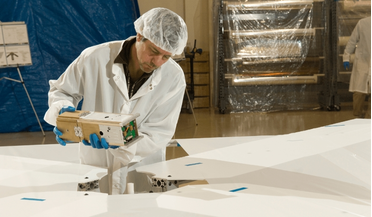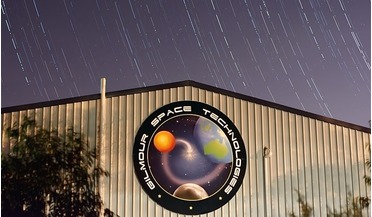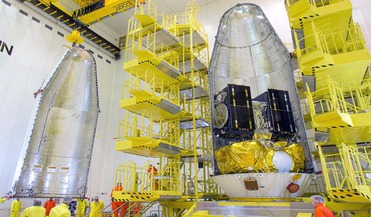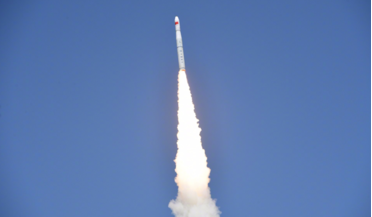 January 2017
New oceans beckon for solar sail technology
January 2017
New oceans beckon for solar sail technology
... sail, and the spacecraft attached to it, to higher and higher speeds. And it can do so without the use of any fuel. It is a common misperception that solar sails use the solar wind for propulsion - this is incorrect This last...
 05 January 2018
Gilmour Space completes successful test of hybrid rocket engine
05 January 2018
Gilmour Space completes successful test of hybrid rocket engine
..., and it efficiently decomposed our Hydrogen Peroxide oxidiser at a core temperature well above the ignition temperature of our fuel.” The company has already completed tests of its mini hybrid-propulsion engine – the Cubesat In-Space Propulsion...
 23 May 2016
Soyuz’ latest mission for Europe ready for launch tomorrow
23 May 2016
Soyuz’ latest mission for Europe ready for launch tomorrow
... orbit and has enabled Soyuz to perform a full range of missions. After its fuelling in the FCube (Fregat Fueling Facility), the Fregat was transferred to the Spaceport’s S3B clean room, whereby the upper stage was...
 05 June 2019
A first for China as it demonstrates new sea-launch capabilities
05 June 2019
A first for China as it demonstrates new sea-launch capabilities
... 2 metres in diameter, is designed and built by the China Academy of Launch Vehicle Technology and is the only solid-fuel carrier rocket in the Long March family. Its small design offers quick deployment and after taking...
 April 2020
Replacing hydrazine fuel with a greener alternative
April 2020
Replacing hydrazine fuel with a greener alternative
... they are stated to be higher-performing than monopropellant hydrazine systems, they fall short against bipropellant systems. Fuel prices are also significantly higher than hydrazine. Moreover, availability is scarce as there are only two suppliers...
 October 2024
EO data - the fuel that makes climate action possible
October 2024
EO data - the fuel that makes climate action possible
... to net-zero and harness crucial financial and technological opportunities across industries. It’s that simple: data is the fuel that makes climate action possible. Detecting methane presents several challenges. Just like CO2, methane is both...